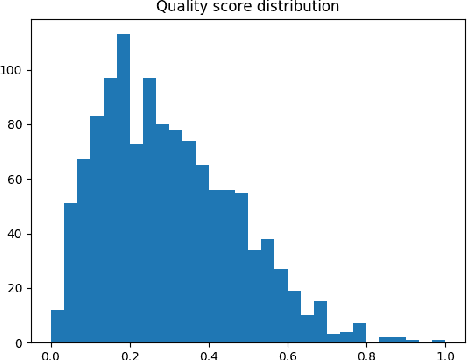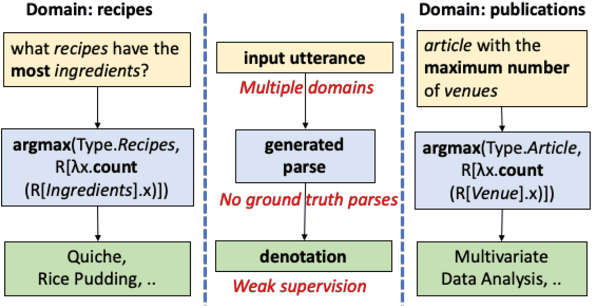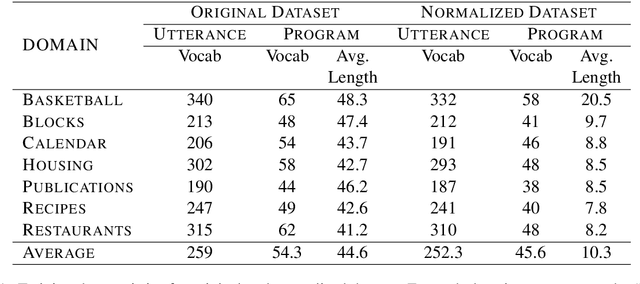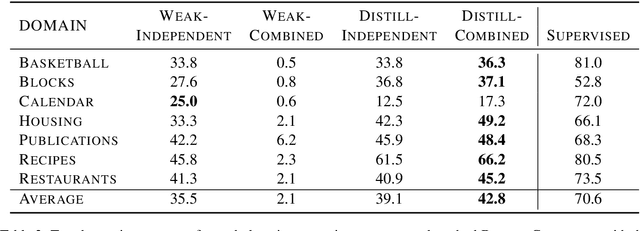Abhishek Bansal
Hyper-local sustainable assortment planning
Jul 27, 2020



Abstract:Assortment planning, an important seasonal activity for any retailer, involves choosing the right subset of products to stock in each store.While existing approaches only maximize the expected revenue, we propose including the environmental impact too, through the Higg Material Sustainability Index. The trade-off between revenue and environmental impact is balanced through a multi-objective optimization approach, that yields a Pareto-front of optimal assortments for merchandisers to choose from. Using the proposed approach on a few product categories of a leading fashion retailer shows that choosing assortments with lower environmental impact with a minimal impact on revenue is possible.
Unified Semantic Parsing with Weak Supervision
Jun 12, 2019



Abstract:Semantic parsing over multiple knowledge bases enables a parser to exploit structural similarities of programs across the multiple domains. However, the fundamental challenge lies in obtaining high-quality annotations of (utterance, program) pairs across various domains needed for training such models. To overcome this, we propose a novel framework to build a unified multi-domain enabled semantic parser trained only with weak supervision (denotations). Weakly supervised training is particularly arduous as the program search space grows exponentially in a multi-domain setting. To solve this, we incorporate a multi-policy distillation mechanism in which we first train domain-specific semantic parsers (teachers) using weak supervision in the absence of the ground truth programs, followed by training a single unified parser (student) from the domain specific policies obtained from these teachers. The resultant semantic parser is not only compact but also generalizes better, and generates more accurate programs. It further does not require the user to provide a domain label while querying. On the standard Overnight dataset (containing multiple domains), we demonstrate that the proposed model improves performance by 20% in terms of denotation accuracy in comparison to baseline techniques.
Using Inherent Structures to design Lean 2-layer RBMs
Jun 12, 2018



Abstract:Understanding the representational power of Restricted Boltzmann Machines (RBMs) with multiple layers is an ill-understood problem and is an area of active research. Motivated from the approach of \emph{Inherent Structure formalism} (Stillinger & Weber, 1982), extensively used in analysing Spin Glasses, we propose a novel measure called \emph{Inherent Structure Capacity} (ISC), which characterizes the representation capacity of a fixed architecture RBM by the expected number of modes of distributions emanating from the RBM with parameters drawn from a prior distribution. Though ISC is intractable, we show that for a single layer RBM architecture ISC approaches a finite constant as number of hidden units are increased and to further improve the ISC, one needs to add a second layer. Furthermore, we introduce \emph{Lean} RBMs, which are multi-layer RBMs where each layer can have at-most $O(n)$ units with the number of visible units being n. We show that for every single layer RBM with $\Omega(n^{2+r}), r \ge 0$, hidden units there exists a two-layered \emph{lean} RBM with $\Theta(n^2)$ parameters with the same ISC, establishing that 2 layer RBMs can achieve the same representational power as single-layer RBMs but using far fewer number of parameters. To the best of our knowledge, this is the first result which quantitatively establishes the need for layering.
 Add to Chrome
Add to Chrome Add to Firefox
Add to Firefox Add to Edge
Add to Edge